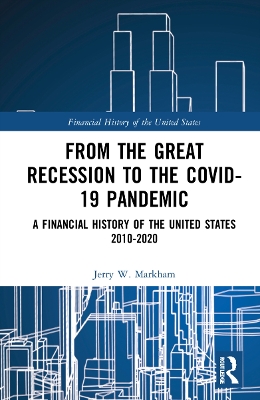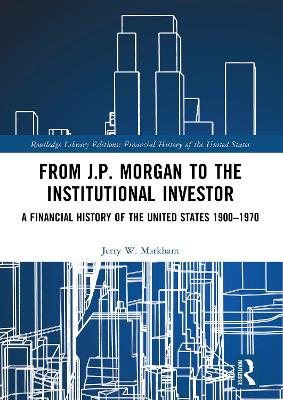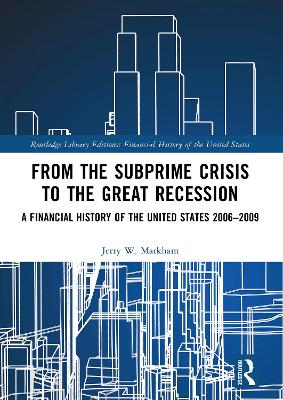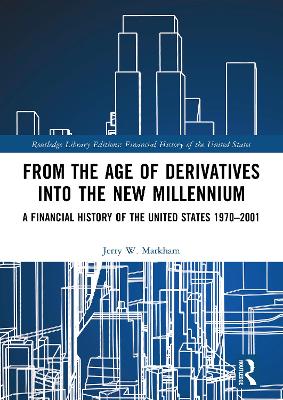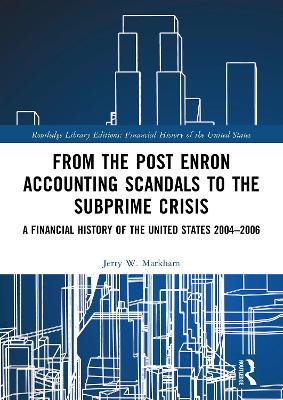Financial History of the United States
7 total works
This volume narrates the financial history of the United States during a period of great upheaval in the early part of the 21st century.
It is divided into three chronological sections: the first section describes the recovery of financial markets after the Great Recession. It begins with an overview of the state of the economy at the start of the new decade, including some of the political storms affecting the economy and financial markets. It explores the uneven nature of the recovery and volatility in the Treasury during these years. The second section sets forth regulatory responses to the Financial Crisis of 2008, including the massive fines imposed on large banks by a swarm of regulators. It examines the “too big to jail” prosecution model, cases involving Libor and foreign exchange manipulation and the impact of rogue traders. It also looks at the developments in payment systems, rise of crowdfunding as a source of capital, and high-frequency trading. The third section describes the rules adopted under the Dodd-Frank Act of 2010 that broadly affected financial markets. It also recounts the Trump trade wars and ends with an account of the financial and economic turmoil that occurred during the Covid-19 pandemic in 2020.
The volume will be an essential addition to academic and public libraries with readers drawn from business schools, departments of economics and finance, and historians.
Originally published in 2002, this is the first of three volumes in a history of finance in America. This volume covers the period from the 'discovery' of America to the end of the nineteenth century. It describes the status of finance in Europe at the time of Christopher Columbus' voyage to America. It then traces its transfer and development in America through the Revolution, into the Civil War and beyond to the speculative excesses occurring after that event.
Originally published in 2002, this is the second of three volumes in a history of finance in America. This volume starts with the investment bankers who dominated finance at the beginning of the twentieth century. It then describes the Panic of 1907 and the resulting creation of the Federal Reserve Board (the 'Fed'). The volume then traces finance through World War I, and it examines the events that led to the stock market crash of 1929 and the Great Depression. From there it reviews the rebirth of finance after World War II and the growth of the institutional investor.
Originally published in 2010, this book covers the development of the mortgage market, the residential housing boom and bust that led to the subprime crisis, and the effect of this crisis on financial institutions as well as the stock market panic of 2008. It details the massive government interventions that sought to prevent another Great Depression.
Originally published in 2002, this volume focuses on the growth of derivatives, the savings and loan crisis, the merger mania of the 1980s, the accompanying insider trading scandals, and the battle with inflation. This history then reviews the market run-up in the 1990s and the rebirth of finance that was being strongly pushed by the Internet economy as the third millennium began.
From the Post Enron Accounting Scandals to the Subprime Crisis
by Jerry W. Markham
Originally published in 2011, this volume examines the Enron-era scandals and several corporate governance issues that were raised as a result of these scandals. It then describes developments in the securities and derivatives markets, covering hedge funds, venture capital, private equity and sovereign wealth funds.
Originally published in 2006, this book examines the collapse of the Enron Corp. and other financial scandals that arose in the wake of the market downturn in 2000. Part 1 reviews the market book and bust that preceded Enron’s collapse. It then describes the growth of Enron and the events that led to its sensational failure. Part 2 examines the role of the Securities and Exchange Commission’s full disclosure system in corporate governance and the role of accountants in that system. Part 3 reviews the meltdown in the telecoms sector and the accounting scandals that emerged. Part 4 traces the remarkable market recovery that followed the financial scandals and the resumption of the growth of finance in America.
